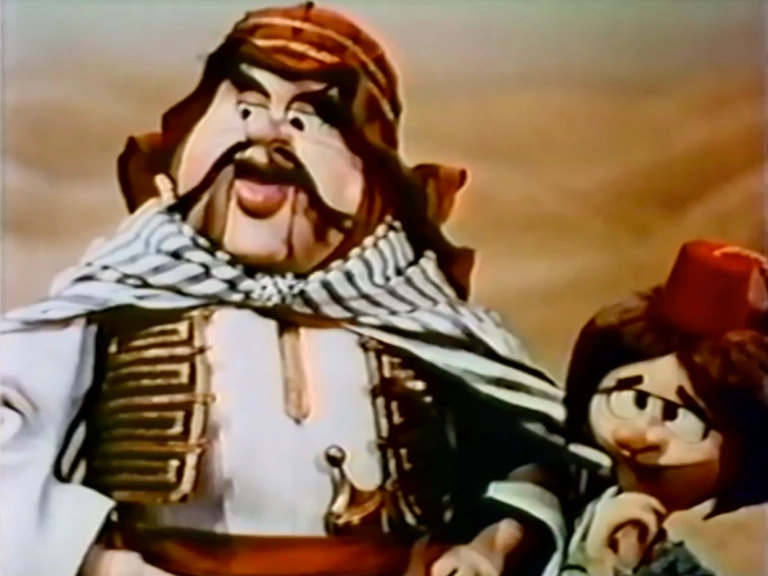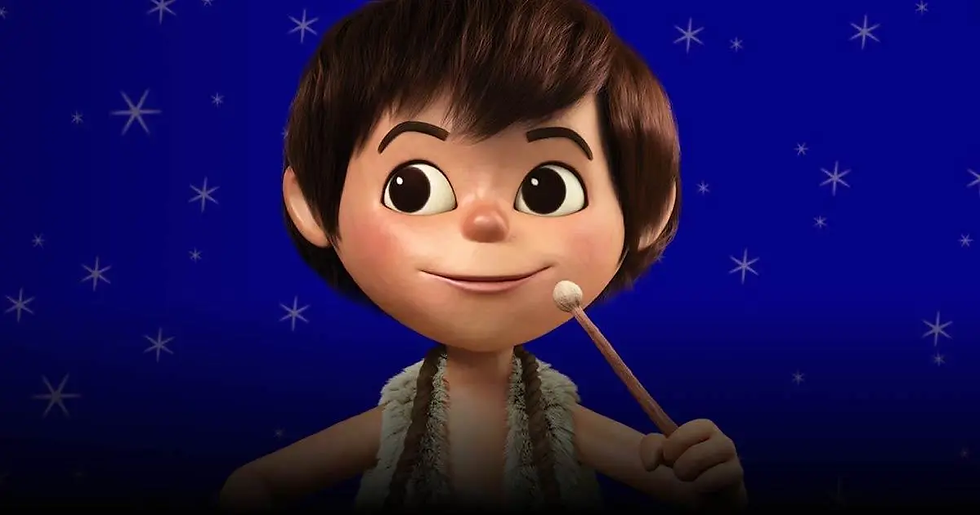
The Rise and Fall of a Christmas Classic
- inthearchivespodca
- Dec 23, 2024
- 5 min read

Christmas is truly a special time of year, a season for families, traditions, and cherished memories. For many, one tradition has been watching the classic Rankin/Bass Christmas specials. Known for their inventive stories, catchy songs, and unique stop-motion animation, these productions captured hearts across generations. Between 1961 and 1987, Rankin/Bass produced 18 Christmas specials, including enduring favorites like Santa Claus is Coming to Town and A Year Without Santa Claus, which still appear on television today.

Yet, as new audiences emerged, some of these classics have faded from view, with lesser-known specials nearly forgotten. One such special is The Little Drummer Boy. Premiering in 1968, this 25-minute feature was an instant hit and even inspired a sequel, The Little Drummer Boy, Book II (1974). Despite its initial success, the special became one of the first casualties of shifting cultural attitudes. Its rise and fall reflect broader societal changes, but before there was a special, there was a song.
The Song That Inspired Rankin/Bass
Robert Mueller, the writer of The Little Drummer Boy, based the story on Katherine Davis's 1941 song “Carol of the Drum.” Though the song was not an instant success, the Trapp Family Singers recorded it a decade later, introducing it to a broader audience. It wasn’t until 1958, however, that the song gained real traction when the Harry Simeone Chorale released it under its new title, “Little Drummer Boy.” This version inspired numerous artists to include it on their Christmas albums, each adding their unique style.
Perhaps the most notable rendition came in 1977, when Bing Crosby and David Bowie performed their famous duet. This unexpected pairing delighted audiences and revitalized interest in the song. While its popularity waned somewhat in subsequent years, the song never disappeared entirely.
In 2012, The Little Drummer Boy experienced a resurgence when the acapella group Pentatonix included it on their first Christmas album, PTXmas. Their hauntingly beautiful version captivated audiences and remains a fixture on Billboard’s Top 100 Christmas Songs list, alongside the Harry Simeone Chorale's classic.

More recently, Christian artists For King and Country revitalized the song with a theatrical concert experience, A Drummer Boy Christmas – Live. Though the song continues to thrive, the Rankin/Bass special that brought the story to life has faded into obscurity.
The Plot
The special begins with narrator Greer Garson reciting Luke 2:1 to set the scene. The story introduces Aaron, a lonely boy playing his drum for his animal companions—Baba the sheep, Samson the donkey, and Joshua the camel. Ben Haramad, the antagonist, notices Aaron’s drumming talent and captures him and his animals, intending to exploit Aaron for profit. Haramad sings “When the Goose is Hanging High,” a song about greed, and forces Aaron to perform.
Aaron declares his hatred for people, prompting a flashback that reveals his tragic

past: his parents were killed by thieves who stole their sheep, leaving Aaron alone with his drum, a gift from his father. Despite Aaron’s resentment, Haramad takes him to Jerusalem, where Aaron amazes crowds with his drumming and sings “Why Can’t the Animals Smile?” However, his anger drives the audience away, and Haramad gains nothing.
In the desert, Haramad sees the Three Kings’ camp and coerces Aaron to perform for them, promising freedom. When the King’s tired camel prompts Haramad to sell Joshua, Aaron, heartbroken, follows the star guiding the Kings to Bethlehem, accompanied by the song “One Star in the Night” sung by the Vienna Boys Choir.

In Bethlehem, Aaron reunites with Joshua but Baba becomes injured. Seeking help, Aaron brings the sheep to the manger. A King explains that only the newborn Jesus can heal Baba. With no gift for the baby, Aaron plays his drum as “The Little Drummer Boy” plays. Baba is miraculously healed, and the story ends with hope.
Thoughts on the Special
Animation
The stop-motion animation in The Little Drummer Boy reflects the early days of Rankin/Bass productions. While charming, the animation is noticeably less polished than the studio’s later works, with some action sequences feeling choppy.
Storyline
What sets this special apart is its focus on the Nativity story, a subject rarely tackled by Hollywood. The narrative dramatizes the birth of Jesus, blending scripture with

creative liberties. While some inaccuracies exist—such as portraying the Magi as kings rather than wise men—the special stays true to the heart of the Christmas story. Notably, it directly quotes scripture, a detail that resonates strongly with religious audiences.
Overall, The Little Drummer Boy brings its source material to life with sincerity and heart, offering a unique addition to the Rankin/Bass catalog.
Controversy
The Little Drummer Boy became Rankin/Bass’s second most popular Christmas special, paving the way for the studio to produce more holiday classics. It aired annually each December until the 1990s when criticism over its portrayal of Arabs led TV stations to remove it from their schedules.
The controversy began in 1991 in Detroit, where Arab American groups protested its broadcast and distribution. They argued that the antagonist, Ben Haramad,

perpetuated harmful stereotypes of Arab people. Zana Macki, director of the Detroit office of the American Arab Anti-Discrimination Committee, stated, “We are particularly concerned that this film feeds the wrong message about Arabs to children. How would this look if you had a little Arab drummer and the bad guys were money-grubbing Jewish men?” The backlash prompted networks to stop airing the special, effectively erasing it from holiday programming.
Why did it take nearly 25 years for these concerns to surface? By the 1990s, evolving cultural norms and heightened awareness of representation brought scrutiny to media portrayals of race and ethnicity. Simultaneously, America’s cultural landscape began shifting, with postmodern ideas on identity, religion, and inclusivity reshaping public discourse. Many elements of The Little Drummer Boy—from its depiction of Arabs to its overt religious themes—no longer resonated with emerging societal values.
Whether due to Ben Haramad’s character or the special’s religious tone, The Little Drummer Boy faded from prominence. Changing viewing habits, the rise of streaming platforms, and a preference for content reflecting modern sensibilities further contributed to its decline. Yet, as we move forward, it’s worth reflecting on what is lost when media cherished by past generations becomes inaccessible to new ones.
Conclusion
The message of The Little Drummer Boy is timeless and inspiring. Aaron, a boy hardened by the world’s cruelty, discovers hope and redemption through the Christ Child. The story reminds us that even the simplest gifts, when offered with sincerity, can make a profound impact.
The Little Drummer Boy holds a special place in the hearts of those who grew up
watching it from the late 1960s to the 1980s. Their love for the story of a boy with "no gift to bring" continues to keep this special alive. Though its broadcast run ended in the 1990s, new audiences can still experience the magic of The Little Drummer Boy through platforms like YouTube or on DVD.

Rankin/Bass's Christmas specials remind us of the joy and wonder of the season, and with each viewing, they prove that the stories of the past can still resonate today.

Sources
Chilton, Martin. “’The Little Drummer Boy’: Bing Crosby’s Christmas Classic.” Discover Music, December 2, 2024. https://www.udiscovermusic.com/stories/little-drummer-boy-bing-crosby-christmas-song-feature/#:~:text=The%20traditional%20Czechoslovakian%20choir%2Dbased,Davis%20in%20the%20early%201940s.
Los Angeles Times. “Arab-Americans Protest Airing of ‘Little Drummer Boy.’” Los Angeles Times, December 15, 1991. https://www.latimes.com/archives/la-xpm-1991-12-15-me-741-story.html.
Mercurie. "Rankin/Bass Christmas Specials." A Shroud of Thoughts (blog), December 6, 2007. https://mercurie.blogspot.com/2007/12/rankinbass-christmas-specials.html.
Moser, Zachary. “Why The Little Drummer Boy (1968) was Taken Off TV.” Screen Rant, September 30, 2023. https://screenrant.com/why-the-little-drummer-boy-1968-isnt-on-tv/#:~:text=The%20Little%20Drummer%20Boy%20Contains%20Racist%20Stereotypes&text=While%20most%20of%20the%20characters,in%20a%20somewhat%20stereotypical%20fashion.
Pentreath, Rosie. “A Christmas Classic with Solemn Origins—This is the History of ‘The Little Drummer Boy.” Classic FM, December 16, 2021. https://www.classicfm.com/discover-music/occasions/christmas/little-drummer-boy-carol-wartime-history/.



Comments